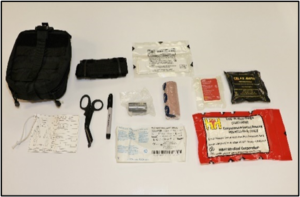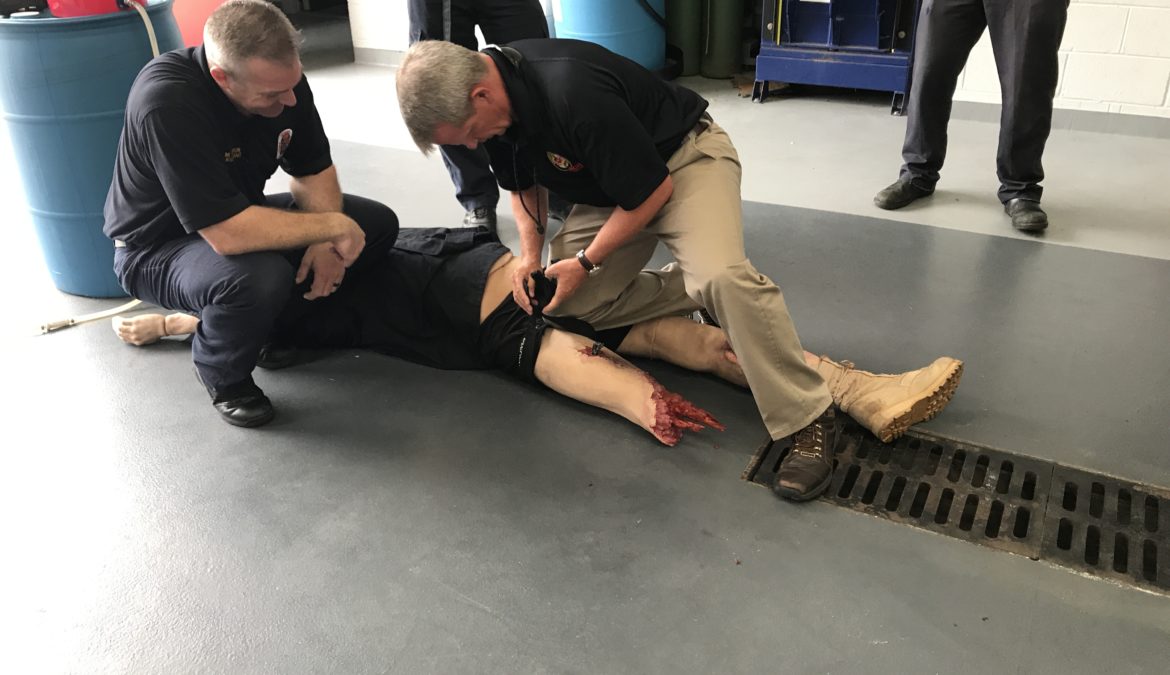In Fiscal Year (FY) 2014, the Maryland-National Capital Region Emergency Response System (MDERS) Steering Committee identified the need to increase the ability of law enforcement officers across the region to respond to and provide life-saving medical interventions during high-threat or hot-zone response operations. To meet this need, the MDERS Steering Committee established Tactical Emergency Casualty Care (TECC) as a priority capability for enhancement and increased investment.
TECC is a civilian-oriented adaptation of the military’s Tactical Casualty Combat Care (TCCC) which establishes a framework to balance the risks and benefits of medical response and provides guidance on medical intervention for preventable deaths during warm/hot zone operations. The development of this capability rapidly expanded across multiple fiscal years and disciplines, supporting significant life-saving care throughout the region.

The Maryland-National Capital Region Emergency Response System’s TECC program initially provided training and medical supplies for 4,850 law enforcement officers across 44 county, municipal, state, and regional law enforcement agencies. The TECC training taught officers how to identify severe bleeding injuries and determine which medical supplies to deploy. After successfully completing the required training, every officer was outfitted with a Police Officer Trauma Kit that contains two tourniquets, hemostatic gauze, a chest seal, an H-style bandage, additional accessories, and basic personal protective equipment. Through this combination of training and equipment, law enforcement officers across the Maryland-National Capital Region are able to administer initial, life-saving medical care to injured persons.
The early success of the TECC capability prompted its expansion to local fire departments in FY 2016. Through the TECC program, fire personnel received supplemental training on the identification of injury patterns and rendering of proper care. Additionally, over 600 TECC kits were distributed to each fire apparatus and ambulance within the Maryland-National Capital Region. This allocation of training and medical equipment elevated the capabilities of fire personnel to render medical care before transport to definitive care.
In tandem with the expansion to local fire departments, healthcare facilities within the Maryland-National Capital Region were also allocated TECC equipment to increase their medical caches. Each hospital received 100 tourniquets, 100 rolls of hemostatic gauze, and 100 pressure dressings to ensure their ability to provide life-saving hemorrhage control during a surge or no-notice trauma event.
Since the inception of the program, law enforcement officers have deployed their TECC training and equipment numerous times to provide immediate medical interventions to victims. In the first three years of the program, officers from the Prince George’s County Police Department deployed their trauma kits 70 times. More recently, a Montgomery County Police Department officer deployed TECC supplies to a multiple gunshot victim in the Germantown area, providing on-scene, life-saving intervention.
Yesterday, Montgomery County Police Officer K. Berry responded to a shooting in Germantown. The Officer located a male who had been shot multiple times. Officer Berry, along with an off-duty MCP Officer, provided life saving aide to the victim before Fire Rescue arrived.#mcpnews pic.twitter.com/P4uKu3g7pB
— Montgomery County Department of Police (@mcpnews) February 7, 2022
The training and supplies that have built the TECC capability have enabled first responders to administer invaluable initial medical care to victims. As the capability continues to expand, law enforcement officers and fire and rescue personnel from across the Maryland-National Capital Region continue to deploy TECC skills supplies on a near-daily basis.


